Nancy Wyatt’s Work Resume
I created an Indeed version of my resume several months ago and am posting a slightly enhanced (more informative) iteration here for your convenience. It includes a few testimonials with a link for more.
I am available for remote work employment or as a freelancer again now.
Nancy Wyatt (Sometimes known as Ayanna)
Linden, VA 22642 – but serving the world via online communications
Email: MyPersuasivePresentations@gmail.com
Cell (540) 692-0101
Writing, Editing, Documenting, Presenting, and Training
Current and Recent Work Summary
I am a multi-faceted author, writer, editor, teacher, and trainer, with a strong history of managerial success in corporations, higher and adult education, and non-profits. In addition, I have many certifications in wellness modalities, as a Life Coach, and as a hypnotherapist.
Currently, at My Persuasive Presentations, LLC, I edit documents or manuscripts for clients and provide coaching, counseling, and classes on business and personal growth topics. I also research, compile, and present technical, expository, descriptive, persuasive, argumentative, and narrative material for training, publication, presentations, education, and auditable documentation. In addition, I create Nancy’s Novelty Infographics for online and in-person meetings, retreats, training sessions, etc. See detailed services below.
People know me as an engaging and energetic person of high integrity, (in)famous for written and oral communication skills and for unusually successful interpersonal relationships with people of all ages, cultures, races, and hierarchical levels.
Summary ~ Education & Software Skills
My B.A. Degree is in sociology, with additional concentrations in English, business, and communications. I graduated summa cum laude from Hunter College, part of the City University of New York (CUNY) system.
I use MS Office Word and PowerPoint, WordPress, various social media, HootSuite, Zoom, Night Cafe, and other software daily, as well as having taught myself how to create my company’s two websites.
Position Sought
I do not need medical benefits.
A good match for me is part-time or full-time employment as a writer, editor, and/or trainer with remote assignments. I can work on-site in the Northern and Western areas of Virginia. (I’m accustomed to long commutes.)
I am equally comfortable working with teams or alone without supervision. In addition to my extensive managerial experience, I have a broad background in complementary and alternative medicine modalities and have participated in wide-ranging volunteer work within prisons and shelters, as well as on Boards of Directors and community task forces. There are details at the end of this document.
Willing to relocate: within the United States if the salary and position make it viable and desirable.
U.S. Citizen – Authorized to work in the US for any employer
Work Experience
Owner, Writer, Editor, Trainer
My Persuasive Presentations, LLC
January 2013 to Present
Location: Virginia-based with Online Services for the World
Telephone: (540) 636-4311 (no text messages) Cell: (540) 692-0101 (accepts texts)
MyPersuasivePresentations@gmail.com (for writing, editing, infographics, classes, and consultations)
GetWell.guru (for holistic healing, meditation, and other wellness classes, consultations, services, and products)
Editing and Writing Services
• Animated PowerPoint Presentations (speeches, classes | yours or mine | can be converted easily to videos)
• Biographies, Company History
• Blogs to Educate, Entertain, and Attract Followers
• Nancy’s Novelty Infographics for event planners, trainers, and presenters (online or in person)
• Policy & Procedures Manuals: create, edit, critique, or codify
• Scripts for performing arts, videos, and presentations of all kinds (even “elevator pitches”)
• Technical and non-technical writing and editing
To see samples of training classes that I have created and presented on a wide variety of topics, Click Here or keep scrolling and click when you are ready to see another link below.
Teaching Adult Education Classes for Work and Personal or Spiritual Growth
See my two websites for more details. Examples include, but are not limited to, those listed as I have at least 30 standard classes with more being added or customized on demand.
• https://mypersuasivepresentations.com/classes/
• https://www.getwell.guru/classes-business-personal-spiritual-growth/
Narrations – Guided Meditations
Writer, Producer, and Voice-Over: (Sleep Like A Baby CDs, MP3 and wav downlinks)
Writer, Producer, and Narrator: Customized or Off-the-Shelf HypnoMeditations
Business Manager, Classified Staff Emeritus
Northern Virginia Community College – Manassas, VA
December 1986 to August 2011
I was a Business Manager at the Manassas Campus of Northern Virginia Community College, which is the second-largest multi-campus community college in the United States and the largest educational institution in the Commonwealth of Virginia. The College includes more than 77,300 students from 180 countries and over 2,500 faculty and staff members.
In addition to creating documentation and training modules, I directed these campus operations:
• Processing over $89M of credit card purchases plus additional cash payments each year for tuition and fees
• Processing approximately $375K in annual receipts for parking permits/fines
• Accounting for $8M of campus inventory + daily shipping, receiving, and mail
• Meeting all audit standards, as well as compliance with regulations and laws
• Managing police (armed and sworn police officers and a few security officers)
• Directing campus parking enforcement, sales, and lot rentals + photo I.D. processing
• Ensuring contract compliance, as the on-site contract administrator, of bookstore, janitorial, and food service vendors
• Developing, training, and executing campus emergency plans. (My plans became a model for other agencies after review by the state and local emergency management officials.)
• Hiring, training, evaluating, and handling disciplinary actions (including occasional firings) of employees in my departments
• Developing, refining, and executing strategic plans, policies, and procedures
• Directing operations of buildings and grounds maintenance of 101 acres and buildings (including new construction) for ten years (until centralization).
Executive Staff and Special Projects
I was on the executive staff of both the V.P. for Finance & Administration and of the Provost. I served on numerous college committees and managed many college-wide (as well as campus) special projects, as follows.
• Procuring and implementing the College’s first deferred tuition payment plan, which accounted for almost $17M in revenue receipts for 2012
• Procuring and implementing the first (144 cameras) surveillance system for the campus police for all
6 campuses and the executive administration building
• Developing and implementing a College for Kids program to teach children about career opportunities, so they could plan their curricula accordingly. I managed budgets, speakers, food service, transportation, etc.
• Developing and executing a campus training program (for all faculty, staff, and administrators) for eVA, the Commonwealth’s automated procurement system
• Developing and executing a campus training program (for all faculty, staff, and administrators) for National Incident Management (NIMS) emergency operations
• Developing and executing a campus training program (for all Business Office and Parking staff) for People Soft financial systems screen navigation.
• Participating in contract negotiations for bookstore, food service, and maintenance contracts
• Developing and executing a new employee Orientation program
• Participating in designing company reorganizations (in this and most previous employment)I also handled state-wide projects:
• Virginia Department of Social Services – I administered a VDSS grant to process scholarships for 1,800 students per term, billing for 23 community colleges and other institutions, meeting all policy and procedural laws and audit standards.
• Commonwealth Managers’ Association Board of Directors – I was fully responsible for planning and executing of annual conference for state-wide agency managerial employees. I handled program creation, budgets, speakers, venue, food service, agendas, and more.
Education
Higher Education
Institutions Attended
Bachelor’s degree summa cum laude in Sociology, with minors in English, Communications. I began college at Colorado State University; took a class at Cornell University; and then, graduated from Hunter College (CUNY) in June 1980
Work Skills
Adult education
Coaching (personal growth, business, special projects)
Counseling (certified for spiritual counseling)
Blogging
Content Creation
Copy editing
Copywriting
Creative Writing
Infographics
Presentation Skills
Proofreading
Researching for Content Creation (blogs, articles, stories, opinion pieces, memes, etc.)
Social Media Management
Teaching (formal or informal, online or in-person. (I provide extensive notes to participants and might record the sessions.)
Technical Writing (includes documentation of procedures and policies that will be audited)
Training & development (technical or non-technical / your classes or mine)
WordPress (typically page or post content creation)
Writing Skills (research, compile, and present technical, expository, descriptive, persuasive, argumentative, and narrative material for training, publication, presentations, education, and auditable documentation)
Samples of Writing, Editing,
Training, and Presentation Accomplishments
Click Here to see wide-ranging examples of work done on:
- PeopleSoft financials training
- NIMS and other emergency management training
- The eVA procurement system
- As well as examples of scripts for videos on topics like teen pregnancy or the founding of a county in Virginia.
Honors and Awards
• Northern Virginia Community College Classified Staff Emeritus, 2013
• Empire Who’s Who Among Executives and Professionals 2004-2005
• Photo published in Northern Virginia Review 2004-2005 edition
• Prince William County Commission for Women, Service Award, 2002
• Prince William County Human Rights Commission, Award for NPCBW College for Kids, 2001
• Commonwealth (of Virginia) Managers Association, Recognition Plaque, 2001
• Who’s Who in American Education, 1995
• International Woman of the Year Award, 1994
• Who’s Who of American Women Award, 1994, 1995
• Who’s Who of International Business & Professional Women – Hall of Fame Award, 1993, 1994
• Women Making a Difference Award (Channel 8 cable television) (for work with homeless people)1990
• The Governor’s Gold Medal Award, 1990 (for work with homeless people)
• The One and Only Channel Nine (WUSA-TV) Award, 1990 (for work with homeless people)
• The American Jefferson Award, 1990 (for work with homeless people.
Certifications and Licenses
To see the web page for numerous certifications, Click Here.
Publications

Three Hots and a Cot: Stories of Courage from People Struggling with Homelessness, Addiction, and AIDS
These are stories of courage, faith, and growth as American citizens overcome extreme hardship from Homelessness, Addiction, and AIDS. The scripts were compiled for the performing arts as Three Hots and a Cot, which refers to being able to get three hot meals a day and a “bed” on which to sleep. Nancy Wyatt authored the biographies of residents in the largest shelter in the United States. Together, they performed the scripts as monologues for educational, religious, civic, business, federal, and state governmental organizations. This helped raise awareness and funds for organizations serving homeless people and addicts.
Break The Chain of Domestic Violence
“Break the Chain,” by Nancy Wyatt is a One-Act Play About the Subtleties of Domestic Violence
Anthologies
My work also has been published in several anthologies. These were primarily poems or short stories.
Boards, Memberships, and Community Service
CASA (Court Appointed Special Advocate) Board, Domestic Violence Coalition
Change Your Life (a Meetup group I founded and hosted)
Commonwealth Managers Association Board
Community That Cares Board (serving “at risk” teens)
Fairfax Metaphysics and Spirituality Group
Greater Prince William Adolescent Pregnancy Prevention Coalition (video project)
Health & Wellness Council (Prince William Chamber of Commerce)
Hispanic Council (Prince William Chamber of Commerce)
Holistic Chamber of Commerce (I was a member of both the national and local groups that hold classes, disseminate information, and act in support of entrepreneurs in the holistic healing and metaphysical communities.)
Meet Your Self (A health, wellness, and metaphysical Meetup group that I founded)
National Political Congress of Black Women (College for Kids project)
One Million Cups – a Kaufman Foundation-sponsored, national networking group of entrepreneurs who gather together weekly (over coffee) to mastermind and advise fellow small business owners
Prince William and Fauquier County Chambers of Commerce (recent)
Prince William County African American HIV and AIDS Task Force
Prince William County Better Beginnings Coalition (video project)
Prince William County Task Force on Homelessness
Small Business Roundtable (Prince William Chamber of Commerce)
Sterling Women of Manassas (women entrepreneurs)
Volunteers of America, Prince William County Advisory Board for a shelter
Write by the Rails (I was a Board Member at Large 2021-23 and still am a member of this writer’s group in Prince William County Virginia. It is a chapter of a Commonwealth writer’s organization.)
Testimonials
Click Here to see several testimonials on different topics, or simply skim below for a quick sampling.
2023 Testimonial for Writing/Editing/Presentations from a well-known business coach.
Nancy has used her analytical and editing skills to critique some of my manuscripts and, periodically, is hired by some of my clients to write or edit their documents. We all have been well pleased. She has excellent writing and oral presentation skills and can speak in many “voices,” crafted to suit each target audience. She is the author of a book containing gripping stories about real people who experienced homelessness, addiction, and AIDS while living in a shelter, and she has equal facility in writing technical manuals for business or poetry for publications. She is collaborative, but works equally well alone, and would be an asset to any project or organization.
~ Business Coach, Marvin Powell
June 2022 – This testimonial is from the author of many books, the owner of a successful writing services business, and the founder/president of a writing club.
“Nancy is everything a copywriter and editor should be – knowledgeable, precise, creative, and diligent. Nancy has extensive experience, and I can vouch for her work firsthand, as she edited an anthology for our writers’ group. She met the deadline and exceeded expectations. “
~ Katherine G
This testimonial is from a small business owner in the wellness industry who took a course from me in late 2022.
Nancy is an amazing teacher on so many levels. Her classes are extremely thorough and she goes above and beyond to add extra resourceful content, which I appreciate so much. She is passionate and knowledgeable and her voice alone allows you to focus and feel calm with all that she teaches. The topics are numerous and well put together. I look forward to taking more classes and enjoying learning all her different fields of expertise.
~ Rebekah Bersin
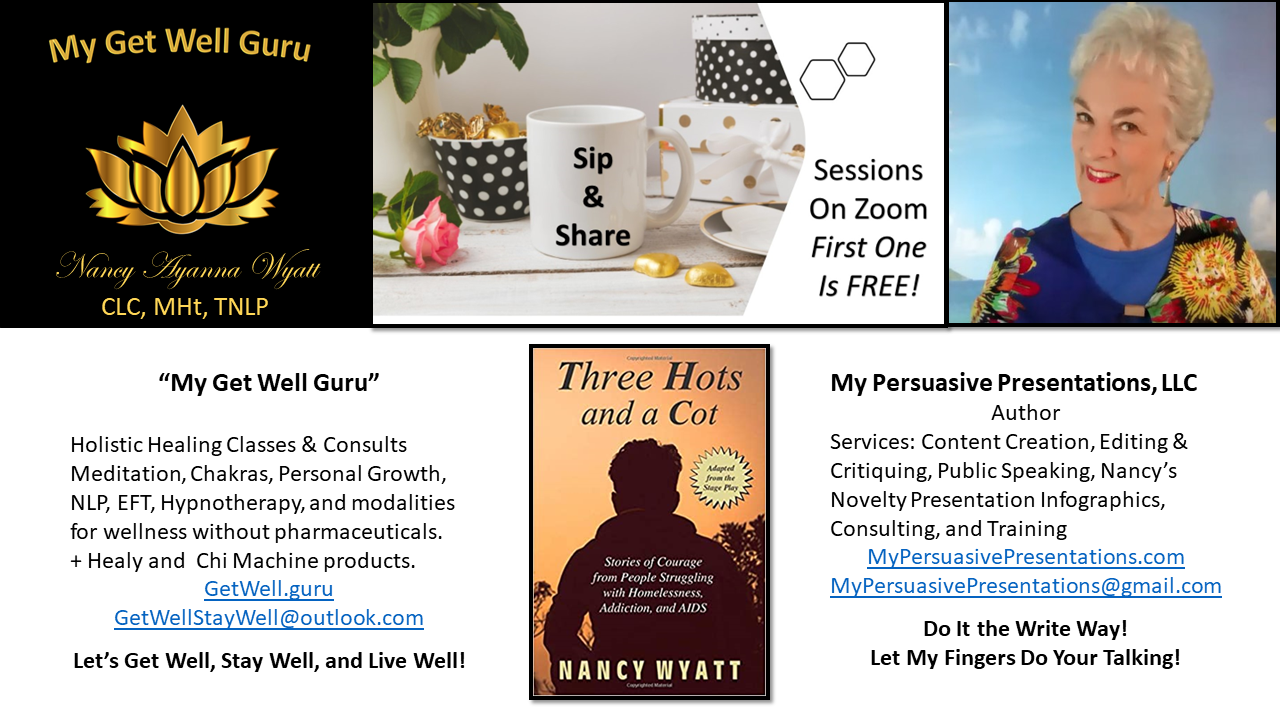
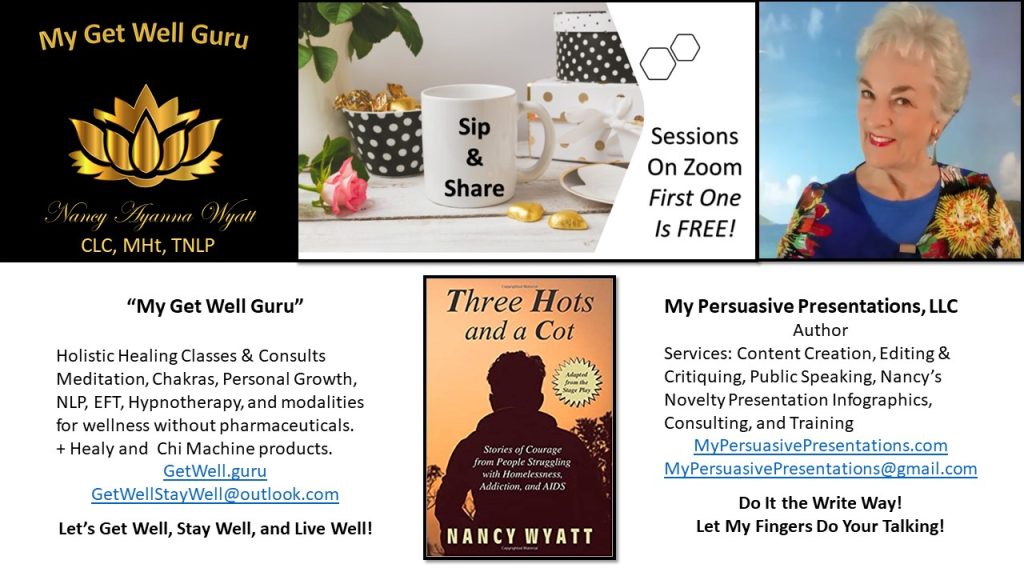




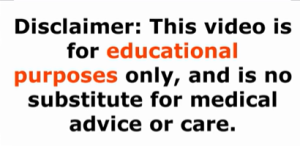
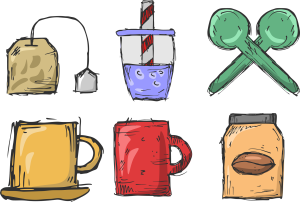
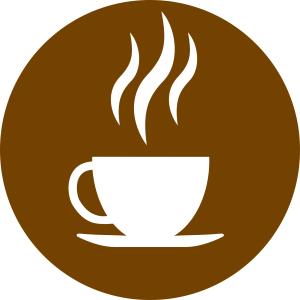

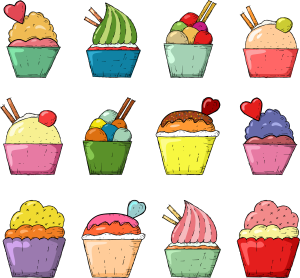
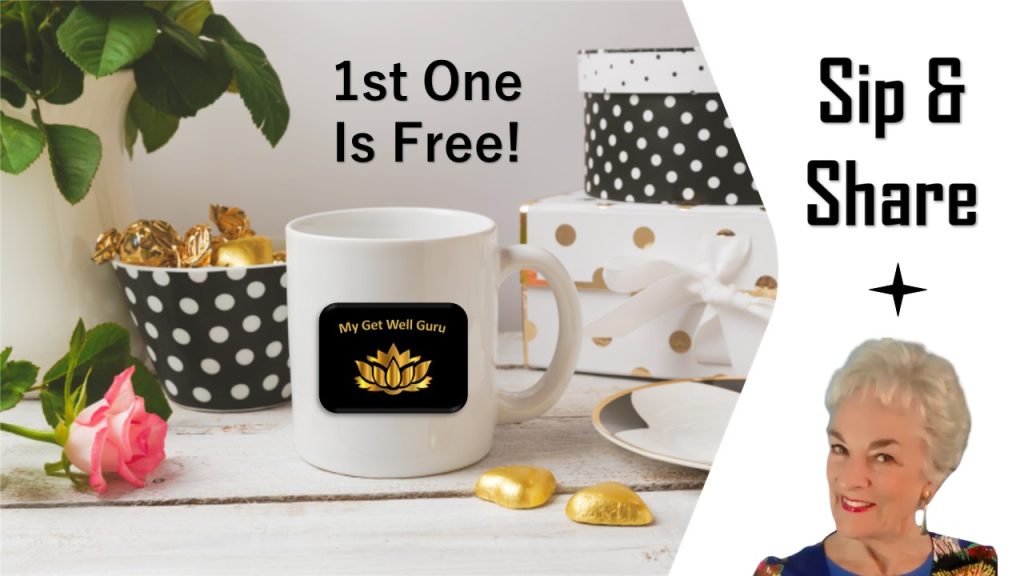
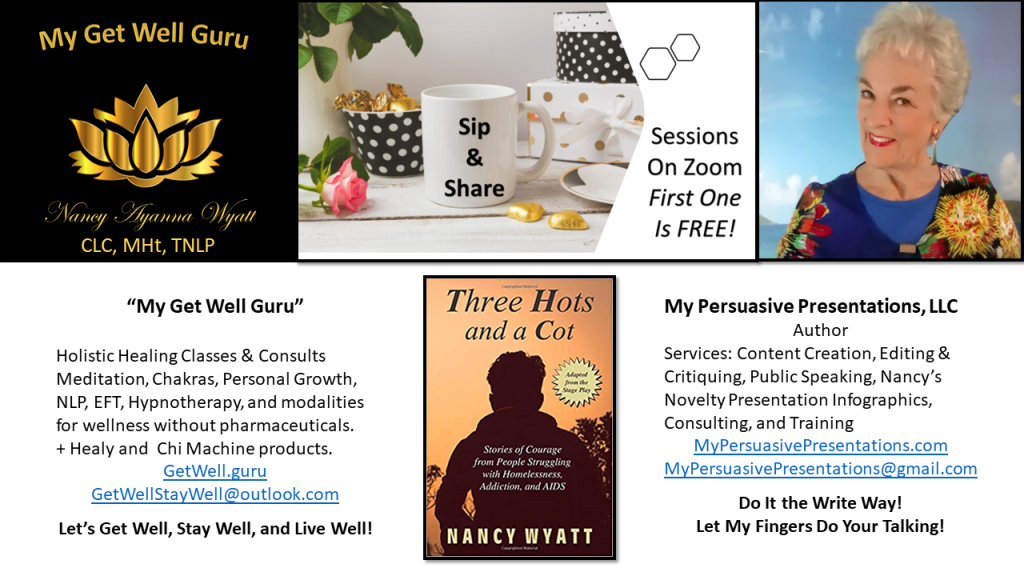


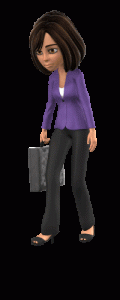
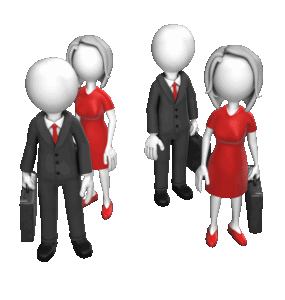
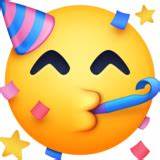

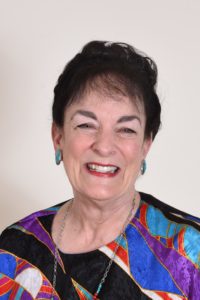 I’m about to teach you how I psyched myself up to access my creativity – by using chakras as the foundation for Haiku poetry – when I had to write “upbeat” pieces of work for publication right after having to Euthanize another (the third during the pandemic) of my pets who had been with me for eighteen years. You also can overcome grief, physical pain, or “just being stuck,” by employing these techniques – with or without the poetry.
I’m about to teach you how I psyched myself up to access my creativity – by using chakras as the foundation for Haiku poetry – when I had to write “upbeat” pieces of work for publication right after having to Euthanize another (the third during the pandemic) of my pets who had been with me for eighteen years. You also can overcome grief, physical pain, or “just being stuck,” by employing these techniques – with or without the poetry.


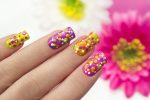

 I
I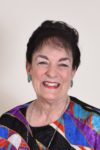 am neither a physician nor a practitioner of Eastern Medicine. However, I am certified in a number of holistic healing (CAM) methods. I can share what they know and what I know as you stare at your fingernails.
am neither a physician nor a practitioner of Eastern Medicine. However, I am certified in a number of holistic healing (CAM) methods. I can share what they know and what I know as you stare at your fingernails.
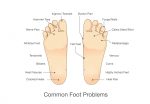 Ayurveda, Chinese medicine, alternative medicine, and now Western medicine often agree on the value of “reading” fingernails (and toenails), eyes, ears, and tongues in the diagnostic process.
Ayurveda, Chinese medicine, alternative medicine, and now Western medicine often agree on the value of “reading” fingernails (and toenails), eyes, ears, and tongues in the diagnostic process. Well, no. Neither are the birds, insects, animals, and people all over the world who use it to cleanse and detox. (There are some birds that eat only a poisonous berry as their whole diet. After they eat it, they go immediately to specific cliffs and eat the clay to detox!) I bet your great-grandparents also knew about it, but they probably did not know how to get the best kind for internal use: properly-mined calcium bentonite clay.
Well, no. Neither are the birds, insects, animals, and people all over the world who use it to cleanse and detox. (There are some birds that eat only a poisonous berry as their whole diet. After they eat it, they go immediately to specific cliffs and eat the clay to detox!) I bet your great-grandparents also knew about it, but they probably did not know how to get the best kind for internal use: properly-mined calcium bentonite clay.




